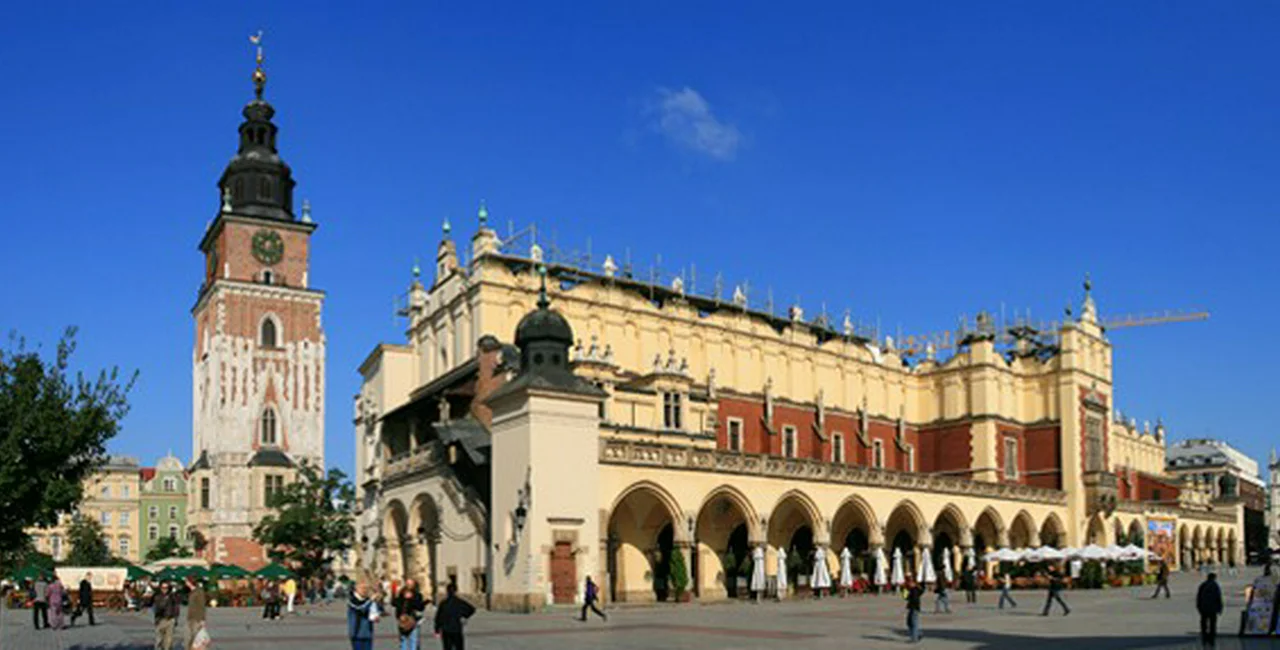Kraków, the next destination in our European cities series, offers a particularly interesting comparison with Prague. Both cities are a visual treat and share many other similarities. But where Prague seems ever more touristy, Kraków appears to absorb tourism while remaining the “quintessential Polish city.”
Undoubtedly, the many monuments, which form an intriguing and appealing jumble of historical layers, from cool Romanesque cellars to boisterous Baroque interiors, help create Kraków’s magic. The late Pope John Paul II, once Archbishop of the city, said: “every stone and every brick is dear to me.” It’s easy to see why.
Such layers point to Kraków’s role as Polish capital until 1596, when Warsaw took on this function. Despite this demotion, Kraków remained a leading European city, becoming Poland’s cultural capital. Miraculously, the city and its cultural function survived World War Two and Communism, further strengthening its unique character.
Arrival and Getting Around
Currently, one direct train per day runs (overnight) from Prague to Kraków, via Olomouc and Ostrava, where you can change if you’re travelling from elsewhere. Alternatively, take a train from Prague to Warsaw (also via Olomouc and Ostrava) and change at Katowice.
International trains arrive at Kraków Główny (Main) station, northeast of and a short hop from the historic center. The ticket offices are currently in the original, cream-coloured building, although a new, underground, ticket hall is planned. The platforms are located a short walk away, in the newer section of the station.
Public transportation in Kraków is comprised of buses and trams, and ticketing works on an honor system, with flat fares and passes valid on both modes. If you stick solely to the area within the Planty (see below), you won’t need public transportation, although it’s necessary for reaching the suburbs.
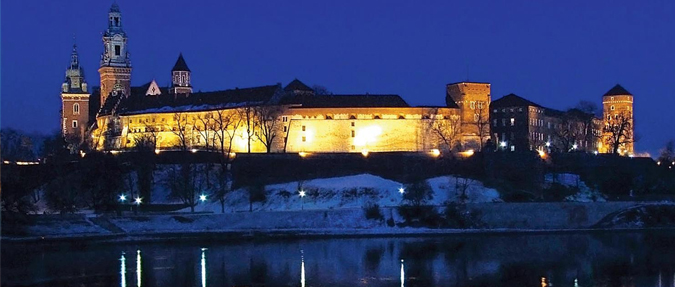
Wawel Royal Castle
Tourist Information
Tourist information points pop up all over the center, but the main tourist office is at ul. Sw. Jana 2. For more information, see the official Kraków website.
What To See
This article covers the Old Town (Stare Miasto) and Kazimierz. Very conveniently, the ring of the Planty, a park established on site of the old city walls, neatly delineates the former. The pedestrianized Old Town, where you’ll find most of the city’s restaurants, cafés, hotels, and entertainment venues, is very compact. To avoid confusion, bear in mind that officially, “Stare Miasto” also covers the streets immediately beyond the Planty.
The Rynek
Your first stop should be the heart of Kraków, the main square or Rynek Główny, a vast space that’s said to be Europe’s largest medieval square. You could easily spend a whole day there just soaking up the tremendous atmosphere and observing the ever-changing theater performed on the open air stage.
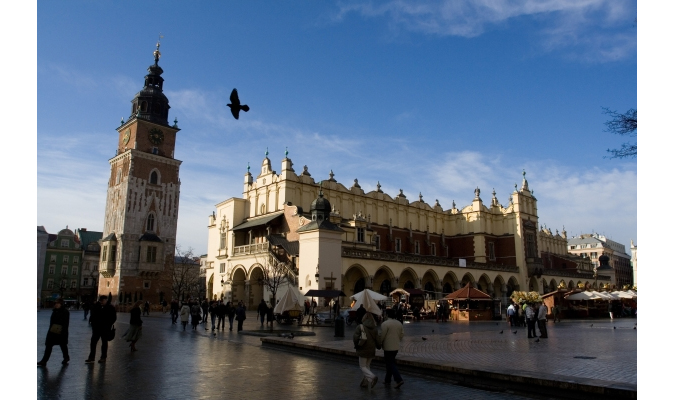
Sukiennice at Rynek Główny
Year-round, the Rynek buzzes with activity, whether it’s street theater or presidential visits. Ubiquitous clerics glide across it, local lads whizz round it at formula-one speed in rickshaw-like contraptions, and squadrons of pigeons stab dementedly at its ancient cobbles. Refreshingly, for a central square in such a popular tourist destination, locals easily outnumber tourists in the Rynek; unlike Old Town Square in Prague, it never feels like a tourist trap.
Many notable buildings surround the Rynek, but two merit particular attention. Looming benignly over the square are the spiky towers of the red brick Mariacki (St. Mary’s parish church). At the top of any hour, stand in the Rynek, look up at the taller tower and listen carefully. You should hear, above the hubbub, a bugle call, sounding from it. The simple melody, known as the Hejnał, stops abruptly, giving rise to a legend that developed in the 20th century. According to the story, the bugler was warning of a Tatar invasion; he stopped suddenly when a Tatar arrow pierced his throat.
Externally, the church looks austere, but the ornate interior surprises with vivid color and decoration. The eye heads straight for the enormous medieval altarpiece, a masterpiece of Late Gothic art.
The other main landmark in the Rynek is the long, cathedral-like Sukiennice (Cloth Hall), which divides the space almost in two. Much of the present building is actually the result of 19th-century restoration. Appropriately enough, the upper floor houses the National Museum’s gallery of 19th-century Polish art; cafés and souvenir shops occupy the first floor.
Opposite, another, solitary, tower, the only remainder of the former town hall, guards the southwestern corner of the Rynek and forms part of the Museum of the City of Kraków. Climb it for great views over the city.
Around the Rynek
Two blocks west of the Rynek you’ll find the characteristic red brick Collegium Maius of the Jagiellonian University of Kraków, the second oldest university in Central Europe after Prague’s Charles University. The restored small quadrangle retains much of its original character and exudes peace, in contrast to the manic bustle of the Rynek. Some of the historic chambers, dating from the 16th century, are open to public.
Around the corner from the quadrangle stands the imposing St Anne’s church, one of many in the Old Town. The glut of churches in Kraków is striking, and they come in all shapes, sizes and styles, from the fun-size St Adalbert’s to the bombastic SS Peter and Paul.
The Royal Way
As the historic center of Kraków can be crossed in minutes, wandering aimlessly is a good a way as any to enjoy it. Alternatively, you can trace the Droga Królewska (Royal Way), making your sightseeing more structured, and giving you the opportunity to follow the route of royal processions and funerals. The Royal Way starts at Florianska Street, passes through the Rynek, and continues along Grodzka to Wawel Castle.
The forbidding Florianska Brama (Florian Gate), a relic of the city walls, signals the northern end of Florianska. Behind it squats the surprisingly small Barbakan (Barbican), whose menace is neutralized somewhat by sculpted walls of mellow brick and a row of rather cute micro-turrets perched on the roof.
If you stand in front of the Florian Gate and turn right, you’ll soon find the Czartoryski Museum, a small but important museum and gallery currently closed for renovation.
Back on bustling Florianska, you’ll soon come to a Cracovian institution, Kawiarnia Jama Michalika. This café has a well-preserved and cavernous Art Nouveau interior dating from the early 20th century, when it was an artists’ rendezvous and a hotbed of satire. The service often makes a snail look speedy, so don’t stop by if you’ve got a train to catch.
The Grodzka part of the Royal Way remains a busy route today and lined with plenty of shops and restaurants. The southern stretch, together with plac sw. Marii Magdaleny and in particular Kanoniczna, is Kraków at its most atmospheric. This tiny, calm, almost self-enclosed district has a special character, with a stronger sense of history, even by Kraków standards. The Renaissance courtyards of the Collegium Iuridicum on Grodzka and the Deanery on Kanoniczna are of note and serve as a shady retreat on a hot day.
Wawel Castle
The imperious bulk of Wawel, a complex of buildings draped over a limestone outcrop at the southern edge of the Old Town, provides a dramatic flourish to Kanoniczna and Grodzka. Poles revere Wawel, where monarchs were crowned, reigned, or are buried. The grave of the late former President Kaczyński, killed in a tragic plane crash in 2010, is also there.
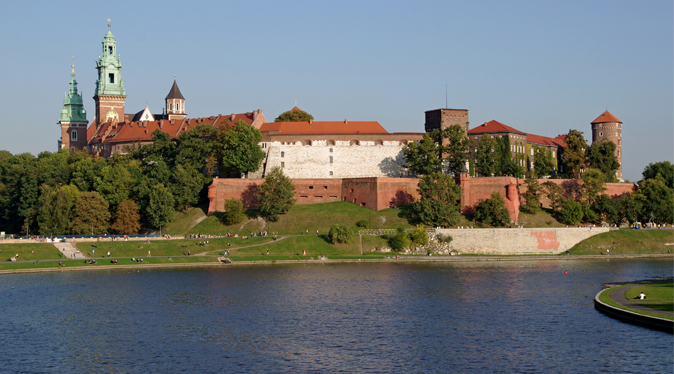
Wawel Royal Castle
Like Prague Castle, the Wawel complex comprises royal apartments and a cathedral, as well as a number of other buildings. At the Italian Renaissance style palace, grouped around an elegant courtyard, some of the royal apartments and state rooms are open to the public; highlights include the Audience Hall, the largest chamber in the Castle, and the Envoy’s Room.
The surprisingly modest cathedral, where Pope John Paul II served as archbishop, mixes various architectural styles with a rather curious result; the domed Italian Renaissance chapels flanking the nave give the cathedral a vaguely eastern orthodox air. The crypt contains the tombs of monarchs and national heroes.
Other sights at Wawel include the Treasury and the Lost Wawel archaeological exhibition.
Kazimierz
Accessible on foot or by tram, Kazimierz starts immediately south of Wawel but has always been separate, beyond the city walls. For centuries, it was Kraków’s Jewish quarter, but this history came to a tragic end during World War Two, when the city’s Jews were forced into the tiny Podgórze ghetto across the River Vistula and then murdered at Auschwitz (Oświęcim) concentration camp, 40 miles west of Kraków. Kazimierz languished under Communism, acquiring a bad reputation as a dangerous, seedy area inhabited by many on the margins of society.
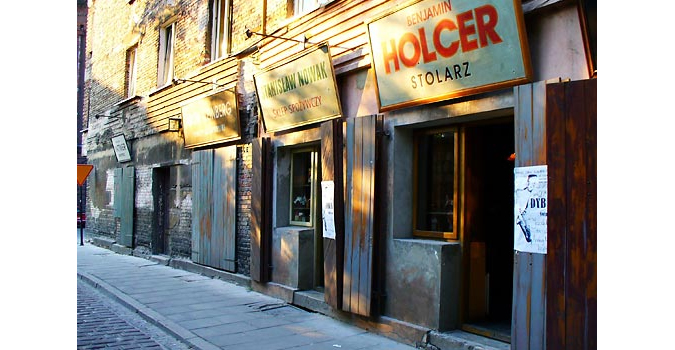
Jewish Quarter
Over the last decade, the neighborhood has been revitalized, helped by public interest in Jewish heritage. Some synagogues in the area are open to the public, such as the Remuh Synagogue on Szeroka. The street has become a focal point of Jewish culture, and incidentally, you may recognize Szeroka if you’ve seen the movie Schindler’s List – Kazimierz served as Podgórze in the movie. The regeneration of Kazimierz has also fuelled its bohemian reputation, reflected in the rash of new bars and restaurants, particularly around plac Nowy.
Have you been to Kraków? What did you like best about the city?
Related articles
- 10 Travel Articles That’ll Get You Excited for Autumn In the Czech Republic
- VIDEO: Amazing Recreation of 14th-Century Construction of Charles Bridge
- Prague Is the Cheapest City In Europe for Ballet, Opera, Art
- Český Krumlov Mulls Over Charging Tourists a Toll
- New Travel Guide Puts Czech Monasteries On the Map












 Reading time: 7 minutes
Reading time: 7 minutes 